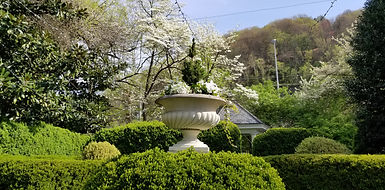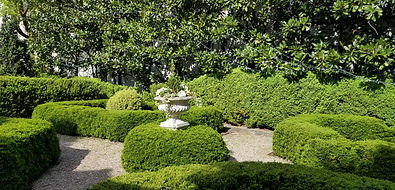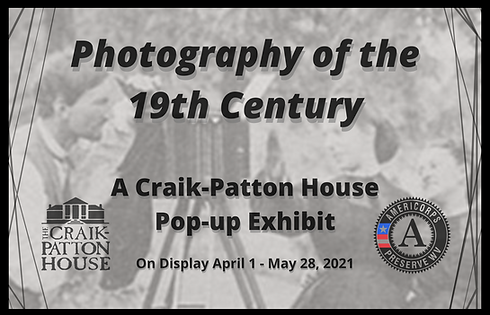
April 2021
While working on the interpretation of the Craik-Patton House’s piano forte, which was donated to the museum in 1986 by the NSCDA-WV Wood County Committee, Mr. Lawrentz shared a few photographs and his memories of the home which belonged to one of Kanawha County’s oldest families.
His recollection provides our museum with a better understanding of the piano’s provenance and the circumstances that resulted in the Wood County Dames acquiring this object for the museum.
The following recollection is that of House Collections Committee member and author of Endangered Homes on the Upper Kanawha, Jeff Lawrentz.
-Nathan Jones

Julia Montgomery Carpenter Estate Sale
The mention of the piano brought back memories for me because it came from the estate of Julia Montgomery Carpenter. I went to school at WVIT in Montgomery and was in my final semester at Tech when I got a post card in the mail from Maxine McRoberts, giving me notice that she would be having this estate sale in Montgomery. Maxine had the reputation of getting the best estate sales in the valley as she never had “pre-sales,” as many of the dealers do. And the public always knew they had the same shot at finding treasure as anyone else at her sales. Maxine rarely advertised her sales by post cards, so I knew it would be worth going to see if she had gone through the trouble of sending them out.
Julia Montgomery Carpenter was the widow of Brown Carpenter and a descendant of the founders of the town of Montgomery. Even when I first came to Montgomery I found her house intriguing because it looked like an old southern farmhouse. It had a narrow two story porch in the center and in the gable ends of the house were circular vents for the attic in which the date 1903 was cut out in silhouette. It was always painted yellow and the porches had aluminum awnings which detracted from the architecture of the house.

"Looking at the back side of the house the large back wing is almost obscured by growth."

"314 Fifth Ave, Montgomery, WV - If you look carefully through the leaves you can see an attic vent."

"On the east side of the house (to the right of the front door) was this side porch."

"Looking at the back side of the house the large back wing is almost obscured by growth."

As a student, my parents gave me a weekly allowance which was to be spent on food and gasoline. It wasn’t very much, but I was always careful with my allowance because I liked to flea market - even then (This would be in 1984). I had a class at 10:00am on the day of the sale, but had gone by one of the banks to get cash before the sale began (I think my spending budget at the time was something like $30). It was early morning, about 7:30am, and as I stood at the ATM machine I could look across the parking lot and see the house. There were already 3 or 4 people standing at the front door for the sale and I knew then that it was going to be a real “barn burner.” One of the dealers in line was Tom Blankenship.
For me, as a relative newbie to estate sales, it was fun to hear the dealers hurl playful insults at one another. (I vaguely recall one of them cracking about another’s inventory being the same since they opened 20 years earlier.) By 10am, the line for the sale had stretched completely around the block; I knew if I was to see this tag sale I was going to have to cut class - and I did.
When the doors promptly opened at 10am, the piano was among the first of many treasures in the house. It was in the hallway against the wall. A staircase went up the right wall. I have to say now that even 37 years later that was one of the more memorable tag sales I ever attended.
The house was truly packed with treasure. As you entered the room on the left, it contained a large walnut secretary with dentil molding, paneled doors on the bookcase and H-hinges. Years later I would learn that this desk (which sold at a sale for around $1,200 to Betty Wyatt) would work its way up the chain of dealers until it sold a few years later for $50,000 or more to the “high end” dealers. There was a mahogany secretary in the dining room of the house which had the most beautiful astragal glass doors and a drawer that folded down into a writing surface. I was told it was English and it didn’t hold the same appeal for the old time collectors that first shopped the sale. There was an entire set of painted plank seat chairs in old paint.
The house was so crowded you could hardly move in places and some people were down right mean. I remember one woman standing in line to pay for her treasure; she was holding a box and another walked by, saw something they liked, and made off with it in the crowd.
As you entered the front hall to the right was a living room with a fireplace centered on the back wall. To the left was a closet and the door of the closet had been converted into a “hinged” bookcase. Maxine ran out of time after pricing things and I remember seeing “all books 50 cents each.” I quickly pulled 5 or 6 leather-bound books from the shelf and quite foolishly left behind a bible which had the same, “Sally Thompkins,” written inside.
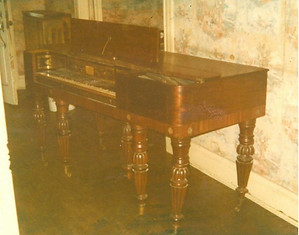
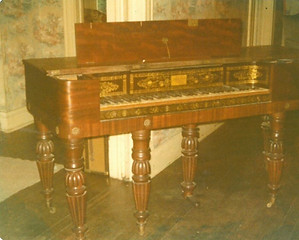
One of the books was a volume of Shakespeare and inside the cover was written, “a relic of Robertson hospital, under charge and run by Capt. Sally Thompkins,” with a record of how many soldiers were received and treated. A small book of poems by Robert Burns was signed by Christopher Thompkins and I would later learn this to be Sally’s father. She was the only woman ever commissioned in the capacity of a Lieutenant in order to keep charge of a hospital she was running in Richmond, VA wherein she treated solders from both sides. I was able to afford a few other relics from that magical house, but I will never forget what fun it was to look through all the things priced to sell that weekend.
On the living room mantle was a gilt statue clock under a glass dome; I recall a corner cupboard in the far corner in which there were a few pieces of canton which were quickly grabbed up. In the upstairs of the house a bedroom (directly above the one with the Chippendale secretary) had been locked up unopened for decades and when they finally found the key to get into the room, saw that the wallpaper had sweated from the walls and was rolled up on the floor where it had fallen.
If you drive along the Midland Trail to Hawk’s Nest, after Gauley Bridge you go up the mountain and on your left is an old Golf Course. A roadside marker notes that Christopher Q. Tompkins was a prominent businessman in the Kanawha Valley before the War. This is where he once had a farm which got a lot of damage from the war. He later died in Richmond, but he was the Thompkins kin to “Capt. Sally” of Civil War fame.
I could ramble on about all the neat things I remember about that sale but like so many old houses, this one sat vacant for many years. Sometime in the 1990s the nearby church bought this and another parcel (which I believed to have been the old Ferrymaster’s Cottage for Montgomery) and demolished both so that they could expand their parking lot. I was fortunate enough that before the properties were auctioned off to take pictures of both houses before they were destroyed.
My landlady during my last years of college was a Mrs. Vickers who was one of the many heirs of Julia Montgomery Carpenter. She said it had taken lawyers years to track down all the heirs to start the settlement of that estate. The piano was one of the items left over from the sale. While it was beautiful, most people at the time saw it as a white elephant and I was delighted when it turned up at Craik-Patton for the house. Ruth Shepherd and I were working Sundays giving tours back then.
Jeff Lawrentz
Recollections
02/17/21

(now demolished) Montgomery, WV



(now demolished) Montgomery, WV

Photographs of the piano forte taken by AmeriCorps Service Member Dennis Strom



Photographs of the piano forte taken by AmeriCorps Service Member Dennis Strom
Around the Garden
In the past few weeks, there have been a number of things taking place in our gardens and visitors may be delighted to see the plant life at Craik-Patton in the best shape that it has been in for quite some time thanks to the efforts of Gardens and Grounds Chair, Georgie Francke.
One undertaking that is sure to add a breath of fresh air to the front lawn is the installation of two new boxwood plants to replace the less-than appealing plants that were suffering from damage.
A deserved thank-you to Mrs. Betsy Wilson for assisting Georgie and the generous donation from her in honor of her maternal grandmother, Mrs. Anna Kinder Cellarius Cortright.
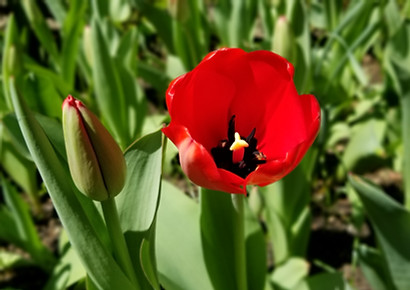
The following photographs depict crewmen from Valley Gardens transplanting the old plants to a feature located adjacent to the Craik-Patton Well-House and the finished installation of the new and healthy boxwood plants. The new plants are expected to be trimmed and shaped once the roots have been given ample time to grow accustom to their new home.

Once these two plants have taken root, they will be carefully manicured into the iconic 19th century spherical shape.

Here you can see two workmen digging up the large root-balls of the old boxwoods.

The old boxwood plants seem to really enjoy this new location despite the relative shade.

Once these two plants have taken root, they will be carefully manicured into the iconic 19th century spherical shape.
Visitors to our par terre garden will find a beautiful arrangement featuring a spry dwarf spruce standing proud among a bed of white petaled flowers and hanging ivy.
